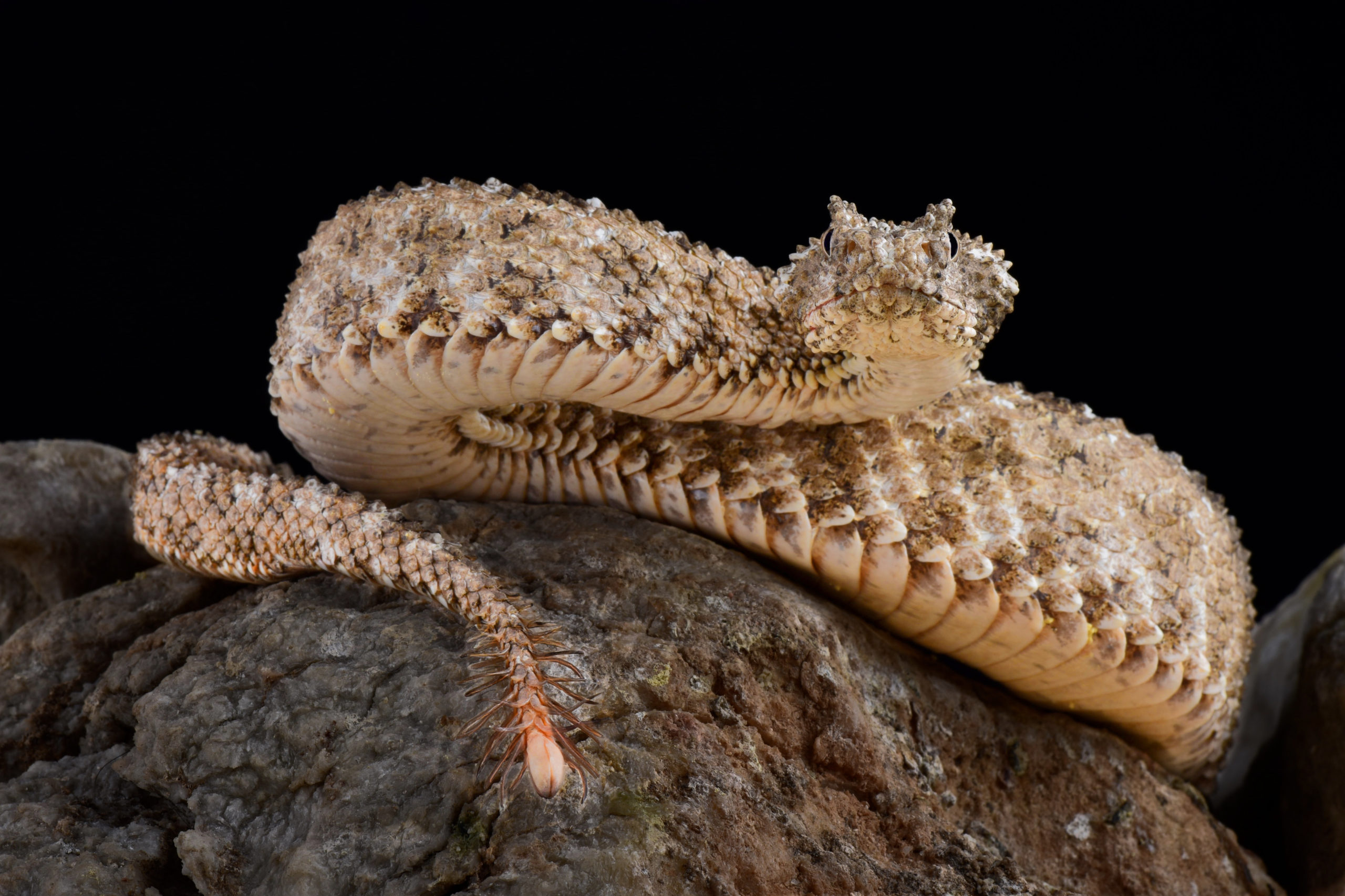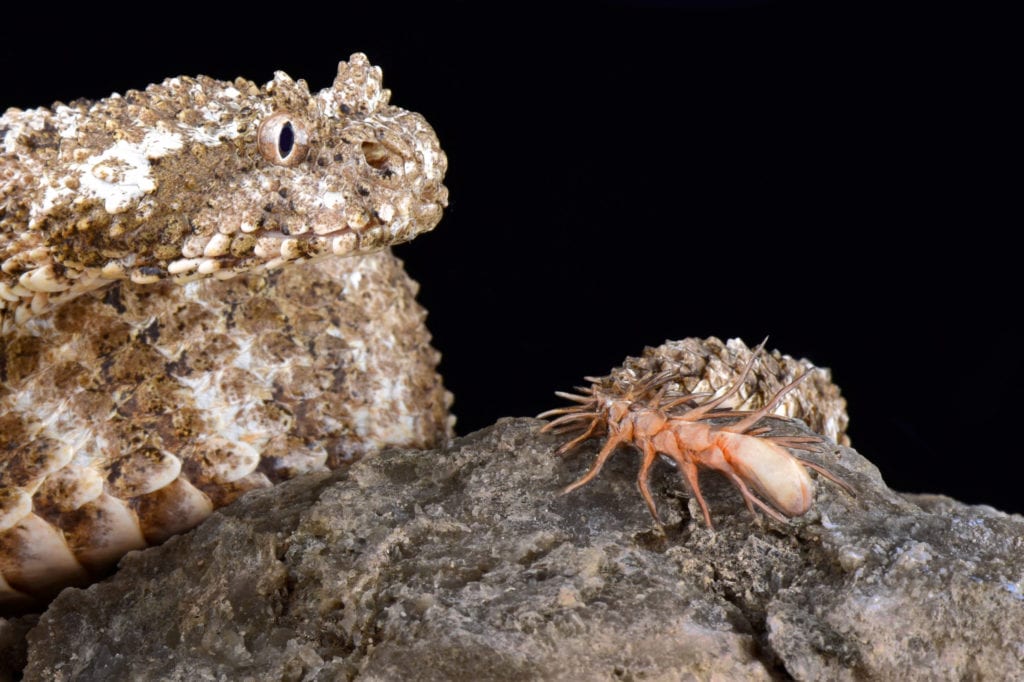When I first saw an image of this snake years ago, I personally thought it was photoshopped!
When I first saw an image of this snake years ago, I personally thought it was photoshopped!
Amazingly, this highly adapted viper really does use its tail to mimic a spider. Originally identified as Pseudocerastes persicus, the spider-tail was noted as distinct in 2006. You may have seen it in action on the Asia episode of Seven Worlds, One Planet narrated by David Attenborough.
The paratype specimen originally found had a bird in its stomach, which first brought forth the idea that this snake may be a specialist hunter.
Amazingly, this highly adapted viper really does use its tail to mimic a spider. Originally identified as Pseudocerastes persicus, the spider-tail was noted as distinct in 2006. You may have seen it in action on the Asia episode of Seven Worlds, One Planet narrated by David Attenborough.
The paratype specimen originally found had a bird in its stomach, which first brought forth the idea that this snake may be a specialist hunter.

This species is native to a narrow area covering western Iran and eastern Iraq, notably the Ilam province. Most of this area is a matrix of forest, meadow, and arid areas. It also includes the Zagros Mountains. There are many bushes as well as rocky crevices that these snakes can use as cover for their lure and ambush method of hunting.
The scales all over the body of P. urarachnoides are particularly rugose or rough, giving them a bumpy appearance. Common to the Pseudocerastes genus, they also have prominent ‘horns’ above the eyes.
Its most striking feature is its specialised tail. The tip is a bulbous round structure, giving the appearance of a spider’s abdomen. Alongside this, elongated scales mimic the appearance of arthropod legs. The tail is then used as a lure, wiggled temptingly to attract birds to feed on what they think is a tasty insect. It has been observed to blend its body in perfectly with the substrate of its environment, making it an expert at its method.
The strike of P. urarachnoides is impressively fast, recorded to be performed in less than a second. This makes sense when you are striking at prey that can easily fly away in surprise. It is believed mammals and reptiles may also be attracted to the caudal lure, though it is an impressive way for a primarily terrestrial snake to snatch feathered food from the sky. Not much is said on the venom action of this species, and it is unlisted by the IUCN due to data deficiency.
I think we can all agree that this snake is an amazing example of specialist evolution!
This species is native to a narrow area covering western Iran and eastern Iraq, notably the Ilam province. Most of this area is a matrix of forest, meadow, and arid areas. It also includes the Zagros Mountains. There are many bushes as well as rocky crevices that these snakes can use as cover for their lure and ambush method of hunting.
The scales all over the body of P. urarachnoides are particularly rugose or rough, giving them a bumpy appearance. Common to the Pseudocerastes genus, they also have prominent ‘horns’ above the eyes.
Its most striking feature is its specialised tail. The tip is a bulbous round structure, giving the appearance of a spider’s abdomen. Alongside this, elongated scales mimic the appearance of arthropod legs. The tail is then used as a lure, wiggled temptingly to attract birds to feed on what they think is a tasty insect. It has been observed to blend its body in perfectly with the substrate of its environment, making it an expert at its method.
The strike of P. urarachnoides is impressively fast, recorded to be performed in less than a second. This makes sense when you are striking at prey that can easily fly away in surprise. It is believed mammals and reptiles may also be attracted to the caudal lure, though it is an impressive way for a primarily terrestrial snake to snatch feathered food from the sky. Not much is said on the venom action of this species, and it is unlisted by the IUCN due to data deficiency.
I think we can all agree that this snake is an amazing example of specialist evolution!
